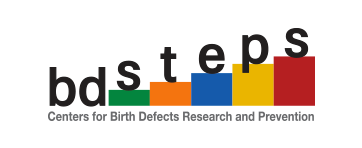About the California Center for Birth Defects Research and Prevention
California represents 15% of all births in the United States. This year alone, 17,000 babies with birth defects will be born in California, and as many as 2,000 of these babies will die before their first birthday. Discovering causes is our only hope for preventing birth defects and working toward the larger goal of ensuring that every person is born healthy.
The California Center of Excellence is a collaborative partnership among Stanford University School of Medicine and the California Birth Defects Monitoring Program in the Department of Public Health. The Center collects data from women residing in eight counties in the Central Valley. It has received funding from CDC since 1997.
Our research answers questions:
About why certain racial or ethnic groups are at higher risk of birth defects, such as
- Why are Latinos at increased risk of brain and spinal birth defects?, and
- Why are African-American babies with birth defects more likely to die?
From parents in California about how to have a healthy pregnancy and a healthy baby, such as
- Will stress hurt my baby? or
- Will eating certain foods help my baby?
About environmental exposures that are especially important in California, such as
- Do exposures to pesticides, contaminated water, and air pollution cause birth defects?
We also do research to try to understand how genes and exposures in our environment interact to affect risks of birth defects.
Principal Investigator Dr. Gary Shaw

Gary Shaw, DrPH, is the Principal Investigator for the Center. Dr. Shaw has been conducting research on birth defects for over 30 years. Shaw is a recognized leader in birth defects research and has produced hundreds of scientific publications on birth defect causes related to diet, obesity, drugs, alcohol, stress, pollution, occupations, and genes. Dr. Shaw is a Professor in the Department of Pediatrics at Stanford University.
"It is a privilege to work with talented scientists and interested parents to try to understand what causes birth defects. The cooperative research program funded by the CDC is one of our best hopes toward preventing the occurrence of birth defects."
— Dr. Gary Shaw
Notable Research Findings:
The following are selected examples of important research publications led by the CA Center.
Carmichael SL, Ma C, Tinker S, Shaw GM. Maternal stressors and social support and risks for delivering babies with gastroschisis or hypospadias Am J Epidemiol 2017;epub.
Padula AM, Yang W, Carmichael SL, Lurmann F, Balmes J, Hammond K, Shaw GM. Air pollution, neighborhood acculturation factors and neural tube defects among Hispanic women in California. Birth Def Res A 2017;109:403-422.
Weber KA, Yang W, Carmichael SL, Shaw GM. Nutrient intake in women before conception and risks of anophthalmia and microphthalmia in their offspring. Birth Def Res 2018;epub.
Padula AM, Yang W, Schultz K, Lee C, Lurmann F, Hammond SK, Shaw GM. Genetic variation in biotransformation enzymes, air pollution exposures, and risk of spina bifida. Am J Med Genet 2018;176:1055-90.
Weber KA, Yang W, Lupo PJ, Dukhovny S, Yazdy MM, Lin AE, Van Bennekom CM, Mitchell AA, Shaw GM. An application of data mining to identify potential risk factors for anophthalmia and microphthalmia. Ped Perinatol Epidemiol 2018;epub.
Contact Information:
Principal Investigator:
Gary M. Shaw, DrPH
NICU Endowed Professor of Pediatrics
Associate Chair
Department of Pediatrics
Stanford University
650-721-5746
